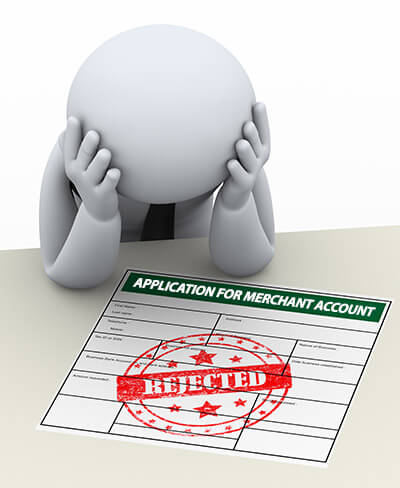It’s easy, right? You’re opening a new business, and you need to get everything set up financially, including credit card payment capabilities.
Since banks are always anxious to get new customers, you’ll be able to call a couple and then take the most competitive bid. Simple. Only it’s not.
Getting a merchant account for your business—the kind of account that permits you to accept credit cards—is often difficult, sometimes even impossible.

The problem is the possibility of chargebacks, or a customer disputing a charge and getting a refund. A seller sells a widget, the customer pays him with a credit card, and the bank providing credit card processing deposits the money minus fees in the seller’s account.
But is the customer going to change his mind and want his money back? The bank is always alert to this possibility, and so considers the money essentially a loan.
Going the payment aggregator route
There is an entirely different approach a newly established business can take, the payment aggregator. A payment aggregator processes credit card payments through its own merchant account.
Using an aggregator, such as PayPal, to take credit card payments is much easier, cheaper, and faster than setting up a merchant account. As might be expected, it’s also much more expensive—or even impossible—if you’re doing business of significant volume.
The downside of aggregators
With aggregators, as with merchant accounts, the possibility of chargebacks is the real fly in the ointment. An aggregator mitigates this risk by limiting the dollar size of each individual transaction.
An aggregator may also hold funds to make sure there is no chargeback, or an aggregator may place limits on the total amount that can be processed in a month. Some aggregators are notorious for putting holds on customer accounts based on suspicious activity, activity that can in reality be as innocuous as high sales volume.
How does all this fit in with the latest and greatest development in the world of credit card processing, the very convenient and versatile mobile point-of-sale devices?
If you’re going to use an mPOS for your credit card processing, you’ll need to decide if an aggregator account will work for you. The apps you’ll find for these such as Square and PayPal Here usually use aggregator accounts rather than traditional merchant accounts, though you can use either form. Authorize.net mobile payment app works with a merchant account.
Merchant accounts vs aggregators
One of the most important considerations is whether your monthly income is going to exceed the amount that an aggregator will process expeditiously. If your sales volume reaches a certain amount, you might be better served with a merchant account.
The aggregators typically have low or no monthly fees, but the transaction fees, the percentage per transaction you pay for accepting the payment, are usually a lot higher. Square charges 2.75% and PayPal Here charges 2.7% on credit card transactions, while the most competitive merchant account providers charge 0.59% + 10c.
A merchant account will deposit money promptly, whereas an aggregator may not. If your business rely on good cash flow, the risk of frozen accounts and delayed payment can be a dealbreaker with aggregators.
Of course, getting approval for a merchant account is another potential stumbling block, so it may be easier for a business just starting out to use an aggregator. An aggregator is also in most cases faster and simpler to set up.
Aggregators represent a real opportunity for businesses that might otherwise find it difficult to secure any kind of credit card processing at all, and coupled with an mPOS an aggregator can make it possible for a micro business to get up and running surprisingly easily.
It’s a whole new world out there, and small businesses have opportunities that didn’t exist even a decade ago. Those opportunities come with shortcomings, however.
If an mPOS is going to help your business fly, you’ll need to decide whether the drawbacks of merchant accounts or the drawbacks of aggregators are going to be easier for you to live with.

